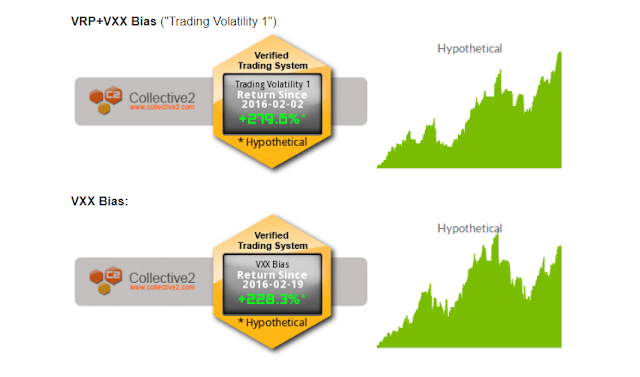Effective 2/28/18:
$SVXY will be a -0.5x volatility fund (previously -1x)
$UVXY will be a 1.5x volatility fund (previously 2x)
This is a similar move to what VMIN & VMAX announced earlier Monday. But while VMIN/VMAX kept their exposure at 1x and moved the duration of VIX futures out ~60 days, SVXY is just reducing its daily movement by half.
As I mentioned in my other post today, this is a more sensible way for a short volatility play. My main gripe is that SVXY went all the way down to -0.5x instead of something like -0.75. The reduced daily movement makes SVXY less attractive as the short vol ETP of choice, but it's nice that you can still buy options against it.
======
ProShare Capital Management LLC Plans to Reduce Target Exposure On Two ETFs
Bethesda, MD (February 26, 2018) – ProShare Capital Management today announced that the investment objective of two of its ETFs will change effective as of close of business on February 27, 2018.
ProShares Ultra VIX Short-Term Futures ETF (NYSE Arca: UVXY) will change its investment objective to seek results (before fees and expenses) that correspond to one and one-half times (1.5x) the performance of the S&P 500 VIX Short-Term Futures Index ("Index") for a single day. The Fund's investment objective currently is to seek results (before fees and expenses) that correspond to two times (2x) the performance of the Index for a single day. If the Fund were successful in meeting its new objective, on a day the Index rose 1%, the Fund should rise approximately 1.5%, before fees and expenses. Similarly, on a day the Index fell 1%, the Fund should fall approximately 1.5%, before fees and expenses.
ProShares Short VIX Short-Term Futures ETF (NYSE Arca: SVXY) will change its investment objective to seek results (before fees and expenses) that correspond to one-half the inverse (-0.5x) of the Index for a single day. The Fund's investment objective currently is to seek results (before fees and expenses) that correspond to the inverse (-1x) of the Index for a single day. If the Fund were successful in meeting its new objective, on a day the Index fell 1%, the Fund should rise approximately 0.5%, before fees and expenses. Similarly, on a day the Index rose 1%, the Fund should fall approximately 0.5%, before fees and expenses.
Certain regulatory approvals will be required for the Funds to permanently pursue these new investment objectives. In the event that such approvals are not obtained, the Funds will consider other courses of action.









